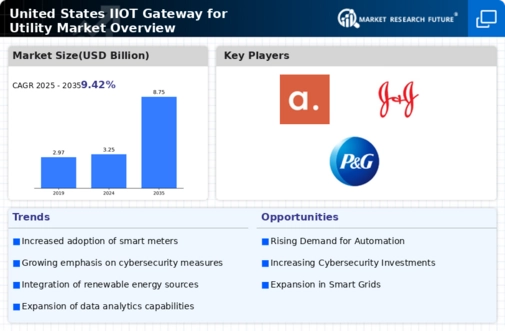US IIOT Gateway for Utility Market Summary
The US United States IIOT Gateway for Utility market is projected to grow from 3.25 USD Billion in 2024 to 8.75 USD Billion by 2035, reflecting a robust CAGR of 9.42%.
Key Market Trends & Highlights
United States IIOT Gateway for Utility Overview Key Trends and Highlights
- The market valuation is expected to increase from 3.25 USD Billion in 2024 to 8.75 USD Billion by 2035.
- A compound annual growth rate of 9.42% is anticipated from 2025 to 2035, indicating strong growth potential.
- The increasing demand for efficient utility management solutions is likely to drive market expansion.
- Growing adoption of IIOT technology due to the need for enhanced operational efficiency is a major market driver.
Market Size & Forecast
| 2024 Market Size | 3.25 (USD Billion) |
| 2035 Market Size | 8.75 (USD Billion) |
| CAGR (2025 - 2035) | 9.42% |
Major Players
Intel Corporation (US), Cisco System, Inc. (US), Advantech Co., Ltd. (Taiwan)













